Disclaimer: As an Amazon Associate I earn from qualifying purchases. Therefore, we may collect a share of sales from the links on this page, at no extra cost to you!
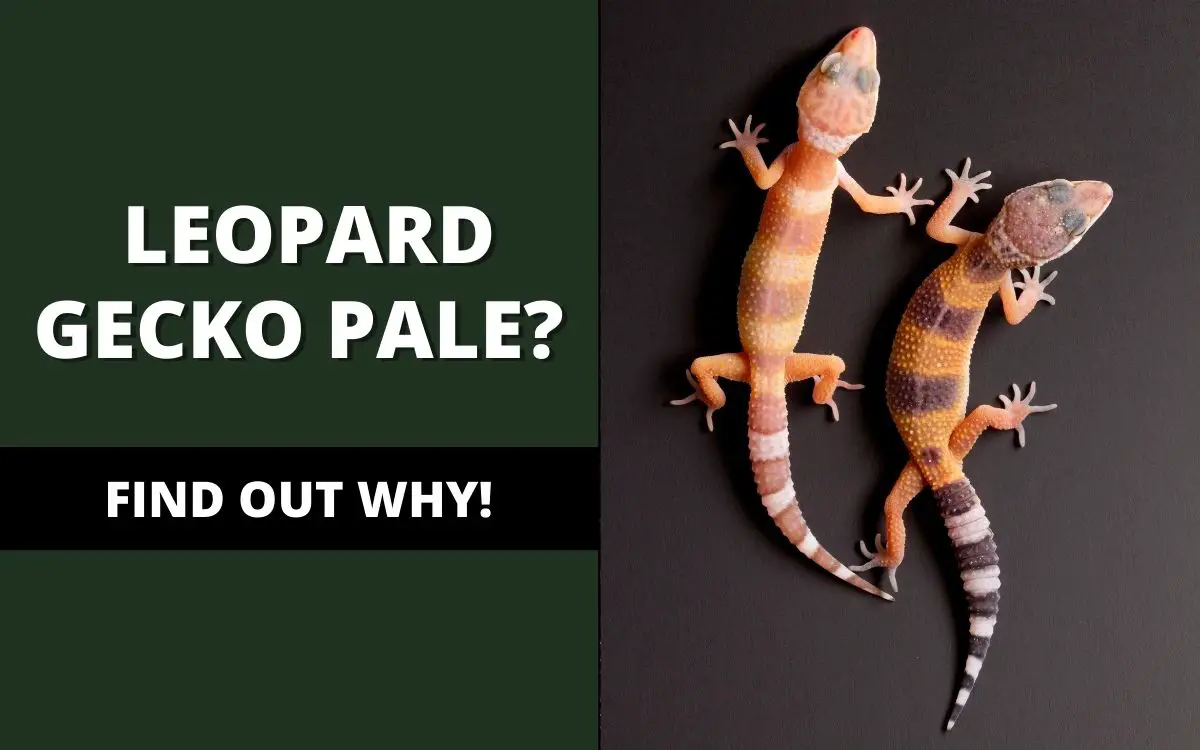
Why Is My Leopard Gecko Pale? (The TRUTH)
You wake up one morning, see your leopard gecko, and it hits you – why is my leopard gecko pale?
Well, here’s the simple answer:
Leopard geckos become pale when they are about to shed. The old, dead skin begins to separate from the fresh skin underneath – causing a translucent effect on your leopard gecko. This process is completely normal and should not be a cause for concern.
However, if you own a leopard gecko, there are three key things you must-know to ensure your leopard gecko has a proper shed. We’re also going to go over several problems that sometimes occur with shedding and solutions for each problem.
Keep reading to find out more!
Jump to..
How to Know When a Leopard Gecko is About to Shed
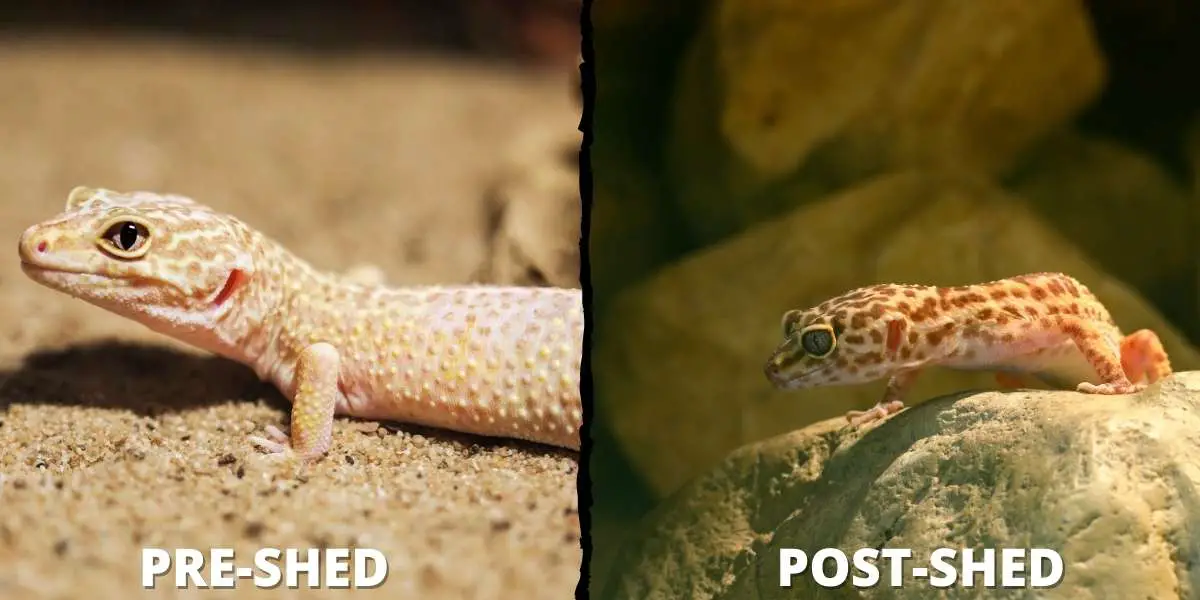
Generally, leopard geckos tend to turn a pale or gray color when they are about to shed. Oftentimes, people get concerned when they see their leopard geckos go through this process for the first time.
Without having a proper understanding of why leopard geckos turn pale, many new leopard gecko owners tend to think their leopard gecko is sickly or has a disease.
However, this couldn’t be further from the truth. A healthy leopard gecko will shed regularly – especially when they are babies. Shedding is a process that actually keeps your leopard gecko healthy, enables them to grow, and keeps them free of parasites!
So, once your leopard gecko first begins to turn pale, you can expect it to start shedding within 2-3 days.
How to Prepare
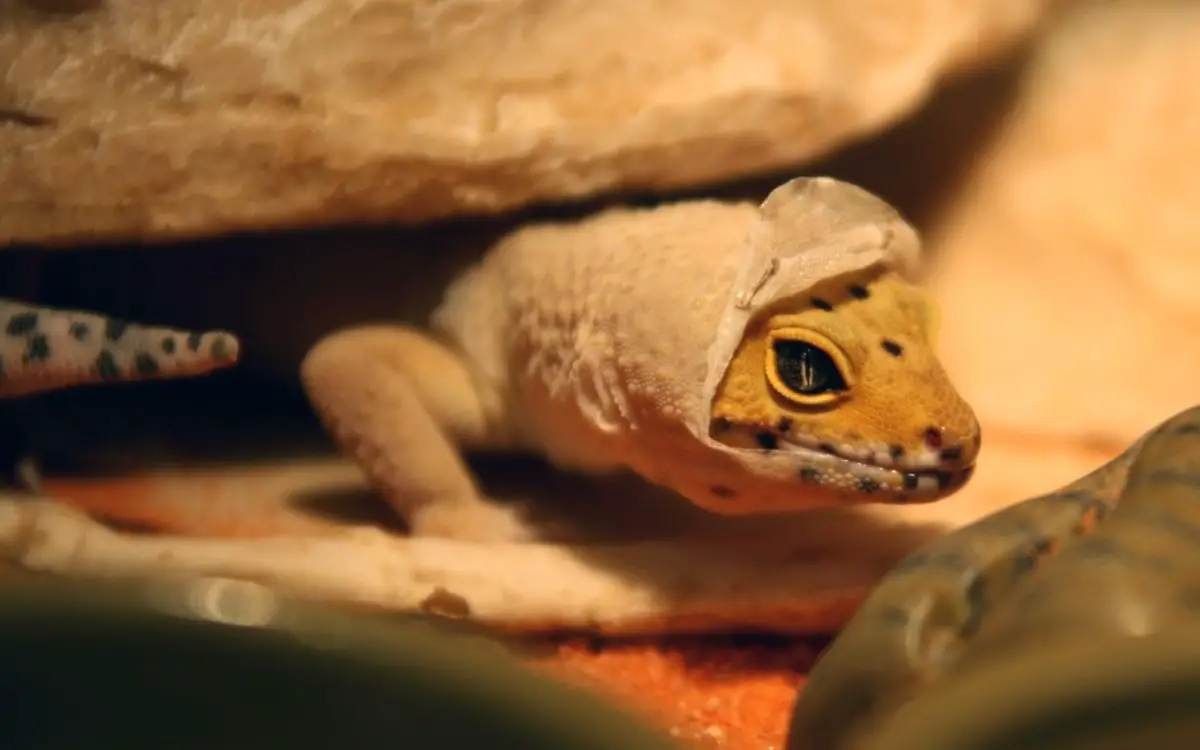
So, your next question probably is – how do I prepare for my leopard gecko to shed?
Well, the most important thing to remember is humidity! Leopard geckos should always have a specific level of humidity, but when it comes time to shed, you should increase the humidity in their enclosure.
You can do this by spraying their enclosure with a mist bottle. You can also spray your leopard gecko directly – they usually love this!
Additionally, some people like to bathe their leopard geckos during the shedding process. This is not necessary and may result in drying-out your leopard geckos skin. However, if your leopard gecko is having trouble shedding, giving them a bath may help loosen up the skin.
Pro Tip: Using a good substrate can help your leopard gecko shed properly. Read this article on the 5 BEST substrates for leopard geckos!
Dangers of Shedding
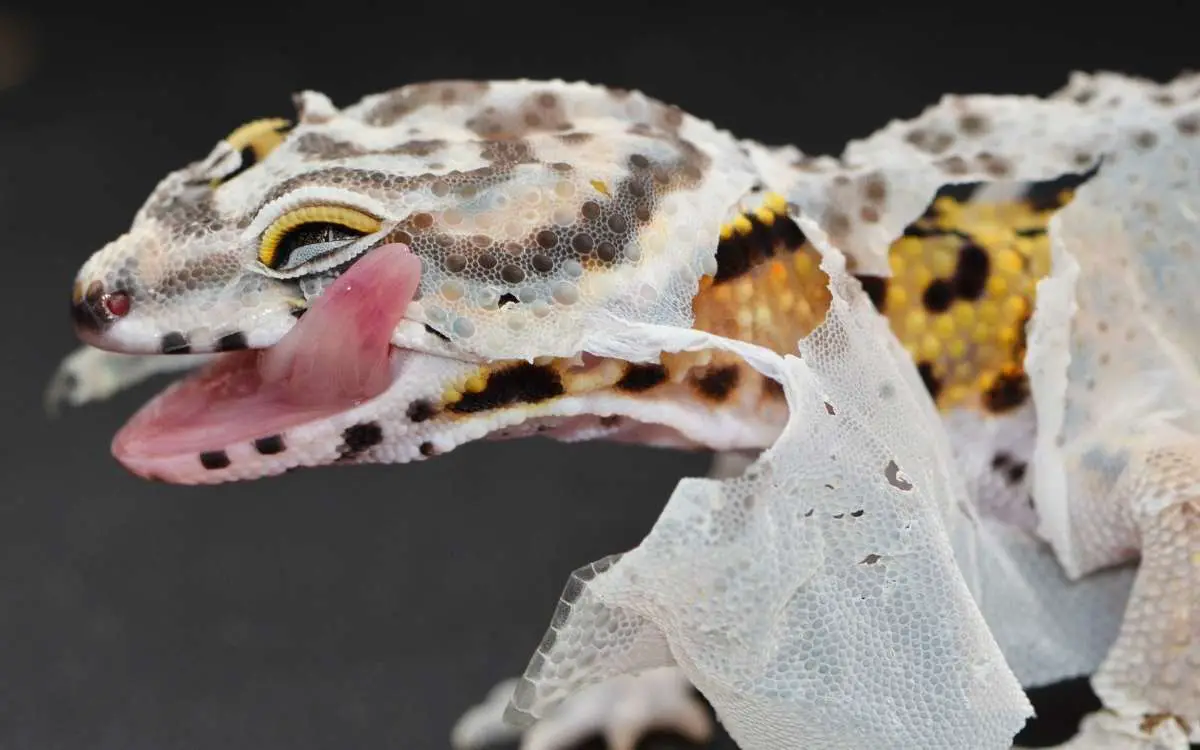
Although shedding is a natural process and is healthy for your leopard gecko, it can also hurt your gecko if you do not prepare properly.
For instance, if you don’t have the right humidity levels in your enclosure, your leopard gecko may struggle to shed its skin. This can lead to some very serious consequences.
First, it can cause a lot of pain to your leopard gecko. The dead skin will likely pull on the new skin underneath. This is both painful and can cause scaring on your leopard gecko.
Moreover, if your leopard gecko gets shed stuck on its toes, it can cut off the circulation and kill your geckos toes. This will result in your leopard gecko losing its toes. Fortunately, it isn’t quite as terrible as it sounds, but it’s still something to keep in mind. If your leopard gecko loses too many toes, it can become a problem.
Unfortunately, many leopard gecko owners end up with these problems because they did not take the proper precautions. This is why it is crucial that you keep the humidity levels up in your leopard geckos tank or enclosure.
Related: Find out some of the weird bugs leopard geckos can eat!
What If the Shed Gets Stuck?

Sometimes, people will find that their leopard geckos struggle to completely get rid of their shed. If there’s still some shed hanging off after a couple of days, you can assist your leopard gecko.
You can do this by giving your leopard gecko a quick bath in room temperature water. Let your leopard gecko sit for a few minutes, or until their skin is nice and moist. You may notice that the loose skin comes off on its own. However, if it does not, simply take a Q-tip or cotton swab and gently pat it against the loose skin. It should come off, but if not, apply a bit more pressure and use a rubbing motion. This should do the trick.
Avoid Shedding Problems in The Future
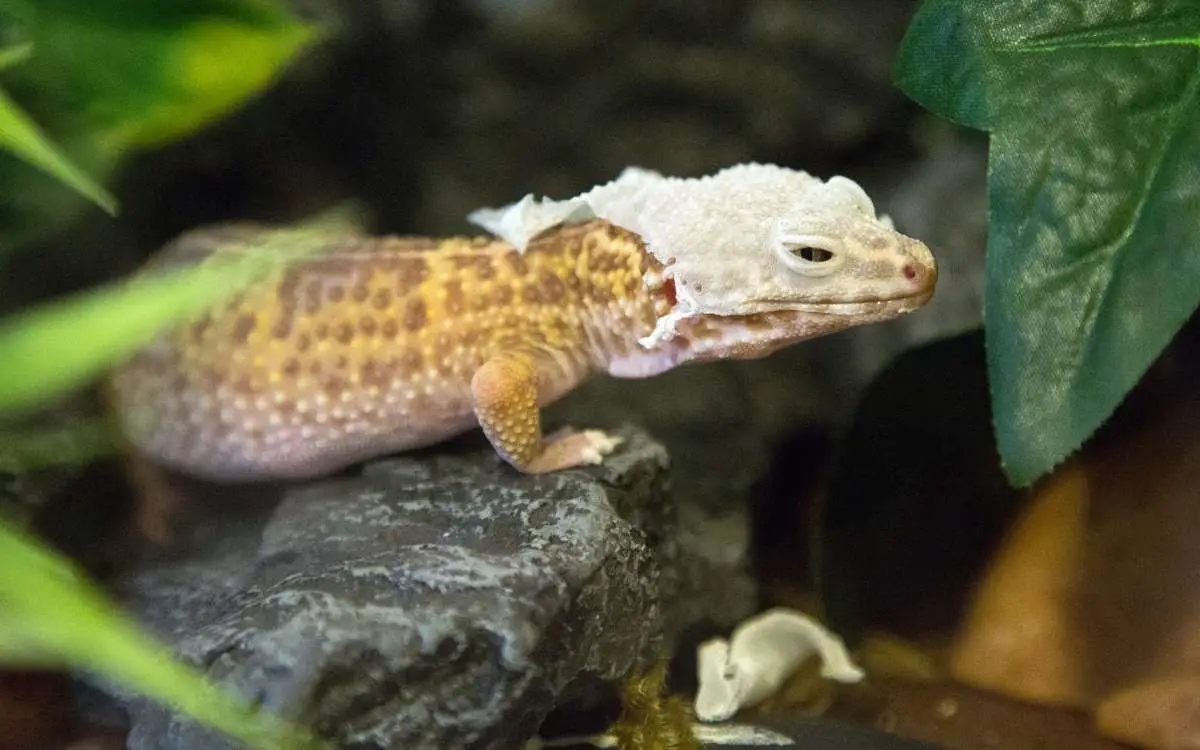
For the vast majority of people, leopard geckos do not have any issues with sheds. It’s usually a smooth process and they do not have to assist their leopard gecko in removing any leftover skin.
However, if your leopard gecko does have issues with shedding, it may be an issue with the care you’re providing your leopard gecko.
You need to be sure to maintain the humidity levels in your leopard geckos enclosure. If you do not have a humidity gauge, you may want to invest in one to assist you.
A leopard geckos ideal humidity level is between 30 and 40 percent. However, when they turn pale and begin the shedding process, you may want to increase the humidity to somewhere between 70 and 80 percent.
Furthermore, you should always be sure to keep your cool hide nice and moist. As we mentioned, many of the problems that arise from shedding are due to misinformation or a lack of care for your leopard gecko. If you take proper care of your leopard gecko, they should do just fine!
Final Thoughts - Why is My Leopard Gecko Pale?
So, now you know why leopard geckos become pale, how to prepare your leopard gecko for shedding, and what to do if problems arise during the shedding process.
We hope you learned something new and feel a bit more confident in your ability to be an amazing reptile parent!
If you’re interested in learning more about leopard geckos – as well as other awesome reptiles, be sure to check out our other guides!
